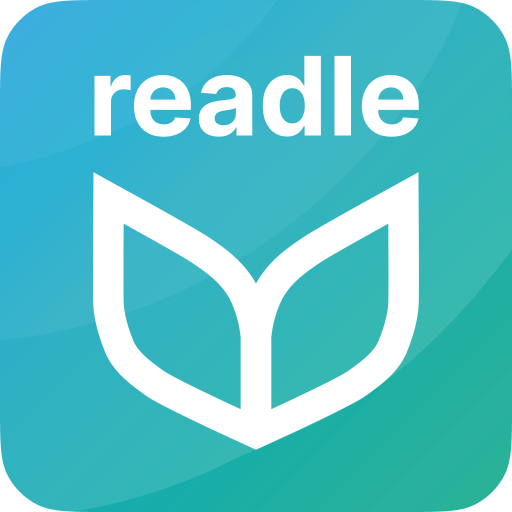
In English, the article “the” is very simple, and no one really ever thinks about it – why would they? However, when learning another language like German, it might be hard to grasp why on earth anyone would make articles so complicated.
And they can be very tricky – not just in German but probably in most other European languages, too. Different languages often use a male and a female “the,” so every noun has a gender. In German, it gets even more complicated because the German articles are used with three genders – female, male, and neutral (der, die, and das).
Moreover, the female article “die” is the same word as the plural article. But the good news is, in opposition to other languages, all plural nouns have the same article (die), no matter the singular gender.
Don’t start worrying, though. Articles in German may be challenging but are definitely manageable. Let us tell you more about them in plain English – and you’ll learn when and how to use “der,” “die,” or “das.”
How To Understand German Definite Articles: Der, Die, Das
As said before, in the German language, every noun has a gender – either masculine (männlich), feminine (weiblich), or neuter (sächlich).
For masculine nouns, the article “der” is used; for feminine nouns – “die”; and “das” – for neutral nouns.
The gender of a noun does not say anything about an actual gender of an object – we’re talking about grammatical gender now. So, if you think you could guess the gender of the noun because you think this object is rather male or female, you thought wrong.
For example, for a lot of people, the moon is female, and the sun is male. In German, it’s the other ways round, though – “der Mond” and “die Sonne.”
The genders for nouns are completely random and don’t follow the rules. The only thing is, when something is actually female or male, you can be sure it’s “die” or “der” – for example, “die Frau” (the woman) and “der Mann” (the man).
Because of that, it’s important to always learn the grammatical gender and the article when learning a noun – it’s just a part of the process of learning the German language.
Little Helpers That Make German Definite Articles Easier
Fortunately, there are some key indicators that might help you know the gender in German right away. There are some exceptions to this rule, of course – but in most cases, it’s possible to guess the gender by the word endings.
1. Male “der”: Nouns ending with -ling, -ig, -ner, -smus, -er, -or, -eur, -ent, -ant, -is, -oge or -us
Examples: der Generator, der Frühling, der Honig, der Rentner, der Psychologe, der Kapitalismus (BUT die Synagoge)
2. Female “die”: Nouns ending with –ung, -ie, -ei, -keit, heit, schaft, –tät, -ik, -(t)ion, -ur, -ar, -ät, -a, -in, -ine, or -euse
Examples: die Zeitung, die Komödie, die Rentnerin, die Bäckerei, die Tätigkeit, die Schönheit, die Mannschaft, die Universität, die Musik, and die Situation. (BUT der Flur)
3. Neutrer “das”: Nouns ending with -chen, -lein, -ment, -tum, -ma, -um, -nis or -ium
Examples: das Mädchen, das Fräulein, das Engagement, das Judentum, das Schema and das Museum, das Zeugnis, das Auditorium (BUT die Erlaubnis)
Therefore, if you care to memorize which version of “the” pairs up with which word ending, you will be able to use the correct articles much more naturally. However, learning the correct article along with the nouns is still important and will save you much trouble.
Definite Article Genders Based On Actual Genders
As stated above, nouns that relate to male living or animal beings are masculine and come with the male gender “der.” For example, “der Mann” (man), “der Vater” (father), and “der König” (king) all describe male people. “Der Hengst” (stallion) or “der Hahn” (rooster) refer to male animals.
And the same can be said about female living things. For example, “die Frau” (woman), “die Mutter” (mother) and “die Königin” (queen) refer to female humans. “Die Stute” (mare) and “die Henne” (hen) refer to female animals.
Exceptions
There are some exceptions, of course – like “das Mädchen” (girl) and “das Fräulein” (Miss), which are neutral words. That is because girls weren’t thought to be women yet when the German grammar rules were created, and so they didn’t have the female article.
Still, today, as we learned before, nouns ending with -Chen and -lein are usually neutral words, so these two also follow that rule.
When it comes to jobs and professions, some family members, or relationship status, there are distinctions between male and female, too.
Examples: “der Polizist” (male police officer), “die Polizistin” (female police officer), “der Lehrer” (male teacher) die Lehrerin” (female teacher), “der Cousin” (male cousin), “die Cousine” (female cousin), “der Freund” (male friend) “die Freundin” (female friend).
Topic-Based Gender Rules
Some nouns that are under a certain umbrella usually have the same gender (although there are also some exceptions, as usual).
- Nouns almost always used with masculine “der“:– Days, months, seasons – eg. “der Montag”, “der Januar”, “der Winter”;– Directions – eg. “der Norden” (north);– Brands of cars/trains – “der Mercedes”, “der ICE” (long-distance train).
- Nouns almost always used with feminine “die“:– Numbers – “die Eins” (the one);– Names of ships/aircrafts/motorbikes – “die Titanic”, “die Harley-Davidson”.
- Nouns generally used with the neuter, “das“:– Colors as nouns – “das Rot” (the red);– Words related to science/technology/mechanics.
What About the Indefinite Articles?
Just like definite articles “der,” “die,” and “das,” there are two indefinite articles in the German language: ein, eine (and ein as well for the neuter gender). These are the alternatives for the English “a” and “an.” Those don’t have a plural form (unlike the definite article die).
When choosing the right indefinite article, you have to look at the gender of the noun – for example, “der Mann.” Then, conjugate the article in the necessary case to fit the noun, and you’ve got the correct form.
Let’s Sum Up
- There are three definite articles in German – der, die, das; and two indefinite articles – in eine;
- German articles are used with the nouns based on their gender – masculine (der), feminine (die), and neuter (das);
- Grammatical gender doesn’t equal the real gender of the object it identifies, and some nouns can have very unexpected genders – such as “das Mädchen” (girl).
- There are several rules that can help you choose the right article – however, the best method is to learn German articles together with their nouns.
Importance of Learning the Articles in German
The German language relies on the articles in each sentence and within the sentence structure; the adjectives and pronouns are based on the articles; and we surely can’t leave out the German cases. It is therefore essential to learn how to use the articles correctly – as they’re a part of the foundation of your German language learning process.
However, learning German articles can be tricky, especially when taken into account that German nouns can have really unexpected genders. However, we have some helpful ideas.
Tips For Learning the German Definit Articles der, die, das and Indefinite Articles ein and eine
When you’ve engraved in your brain to see the article and the noun as being inseparable, it’s much easier to learn them along with the noun. To make it easier to learn them, we recommend using mnemonic techniques.
For example, you can simply choose your own three colors for the three articles and just write down the nouns with the color of your choice, e.g., female nouns are red, male nouns are blue and neutral nouns are green.
You can even go further and imagine if you can, a female sun or a male moon with a big beard. The more ridiculous but gender-specific you visualize it, the easier it might be for you to remember it. Our brains love fun and learn and remember everything much easier when they enjoy the process.
Another trick is to not just write down the nouns in a vocabulary list but use them – speak, listen and read. The easiest way for a perfect listening and reading practice is by using the Readle – learn German App.
No matter whether you’re a beginner or an advanced learner, you can read interesting stories and hear them read out loud by a native speaker. That will help you practice using German articles on a daily basis – and soon, you won’t hesitate between choosing “der,” “die,” or “das.”
